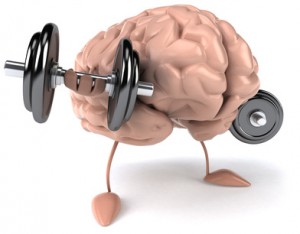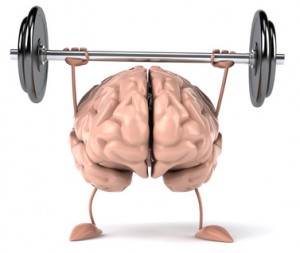The 5 Steps of Accelerated Learning
- Posted by Joe McCullough
- on Aug, 31, 2013
- in Accelerated Learning, Brain-Based Learning, Successful Study Habits
- Blog 3 Comments.
Although I have had this blog for almost nine months now, I just realized that I have never specifically outlined the steps of accelerated learning in any of my previous posts. Well, now is the time to change that. Presented below is a brief summary of each of the five steps of accelerated learning.
1) Prepare Your State (Mental, Emotional, and Physical)
The most important thing you can do before starting any task or project is to adopt a positive and resourceful state of mind. This is especially true of learning. If you begin a learning project or study session with a negative mental, emotional, or physical state, you are virtually setting yourself up to fail. The first step of accelerated learning is to deliberately create a positive, confident, and resourceful state. Since our mental, emotional, and physical states are all connected, this can be easily accomplished using a few simple techniques designed to change each of our three states.
2) Acquire the Skills and Knowledge
After deliberately creating an optimal state for learning, we are now ready to acquire new skills and knowledge. This begins with the big picture of what we will be learning. Before we tackle a new subject, we want to start with an overview, an understanding of the big picture and how everything fits together. This gives our brain a framework in which to assemble the information into a cohesive and unified picture. We can then concentrate on using our preferred learning style(s) and intelligences to learn as efficiently as possible.
Research performed by experts in Neurolinguistic Programming (or NLP) has identified three distinct learning and communication styles: visual, auditory, and kinesthetic. Although we use all three learning styles when taking in new information, people generally prefer one learning style over the other two. When we take in information using our preferred learning style, we tend to learn it faster and easier. During the second step of accelerated learning, we acquire the information and skills using the learning style or styles that work best for us.
Next, we want to explore what you have just learned using our multiple intelligences. In order to really learn something and commit it to long-term memory, we must thoroughly explore the subject matter and turn facts into meaning. We want to interpret the information we’ve just learned and make it personal and meaningful. The more meaningful we can make the information, the faster and easier we will learn it.
 3) Cement the Learning
3) Cement the Learning
Learning new information does us no good if we cannot recall it at a later time and put it to use. The third step of accelerated learning is to make sure that the information that we just learned is firmly planted into our long-term memory.
You have probably heard of the expression “Use it or lose it”. This is especially true of our brains. If we do not use the knowledge and skills that we have just learned, our brains will delete it to make room for new information. Studies suggest that up to 80% of what we learn will be forgotten within 24 hours if some special effort is not made to remember it. In this third step of accelerated learning, we make a deliberate effort to remember what we learned using a variety of practical and easy to implement memory techniques.
4) Examine and Embrace
In the fourth step, you demonstrate exactly what you have learned to yourself and to others. You examine your knowledge and test yourself. The goal is to see how well you understand the information and if there are any gaps in your knowledge.
Once you are satisfied with your comprehension of the material, you then want to take that knowledge and apply it. It is one thing to learn something, but it is another thing to actually use what you have just learned. By embracing what you have learned, you take your knowledge out of the theoretical realm and into the practical. You are showing that the knowledge is now yours and you own it!
 5) Review, Revise, and Reward
5) Review, Revise, and Reward
The final step of accelerated learning is to review the entire learning process. The purpose is to reflect not on what you learned but on how you learned. Learning how you learn best is an ongoing process that takes practice and revision. We review how we learned so we can improve the process the next time around. We continuously revise our learning process until we find the techniques and strategies that work best for us.
And last but certainly not least, we celebrate! We want to reward our efforts so we train our brain to associate pleasure with learning. The reward can be as simple as calling a friend to share our successes or as elaborate as a weekend getaway.
These five steps of the accelerated learning process can be remembered with the acronym PACER: Prepare your state, Acquire the skills and knowledge, Cement the learning, Examine and embrace, and Reflect, revise, and reward.
Comments & Responses
Share…
Recent Posts
- How To Double Your Reading Speed
- The 21-Day No-Complaint Experiment
- Brain Rules for Students and Educators
- Make Your Message Memorable – Five Brain Facts All Presenters Should Know
- 3 Important Memory Principles to Help You Remember Names
Categories
- Accelerated Learning
- Accelerated Teaching
- Brain-Based Learning
- Brain-Based Teaching
- Life Skills
- Personal Development
- Successful Study Habits
Since 1980, New Horizons for Learning (NHFL) has served as a leading-edge resource for understanding learning. Concerned that important research was not reaching most classrooms, founder Dee Dickinson decided to create a network to reach teachers with new information she would have loved to have when she was in the classroom. NHFL’s role has always been to give visibility to effective teaching and learning practices and ideas that have not yet reached the mainstream. Additionally, NHFL has worked in coordination with other reputable networks and learning communities to synthesize the information and turn information into knowledge and knowledge into practice. The website has also been quoted in numerous books and journals, and has received prestigious awards, including one from the International Society for Technology in Education as one of the best education sites on the Internet. Read more about the founding and history of the New Horizons for Learning under the visionary leadership of Dee Dickinson our History section .
Let’s say you just attended training. At the beginning, you knew nothing, or 0 percent, and at the end of the period, you knew 100% – the apex, or tip, of the learning curve. By Day 2, if you did nothing with the information, you will have lost 50-80 percent of what you learned. Our brains are recording information on a temporary basis, and constantly disposing data and/or knowledge. Some of this discarded information may be what we had learned in the training, and really intended to keep!! By Day 7 we remember less, and by Day 30 we retain only 2-3 percent. So, how can you change the shape of this curve?
The best practice activities are those that reinforce the material being learned and give the learner an opportunity to apply skills and knowledge. Some practices provide feedback and mentoring. The learner’s performance may or may not be affected by the results of the practice activities. Practice activities include case studies, learning activities, practice quizzes, practice tests, testing quizzes, and practice labs.